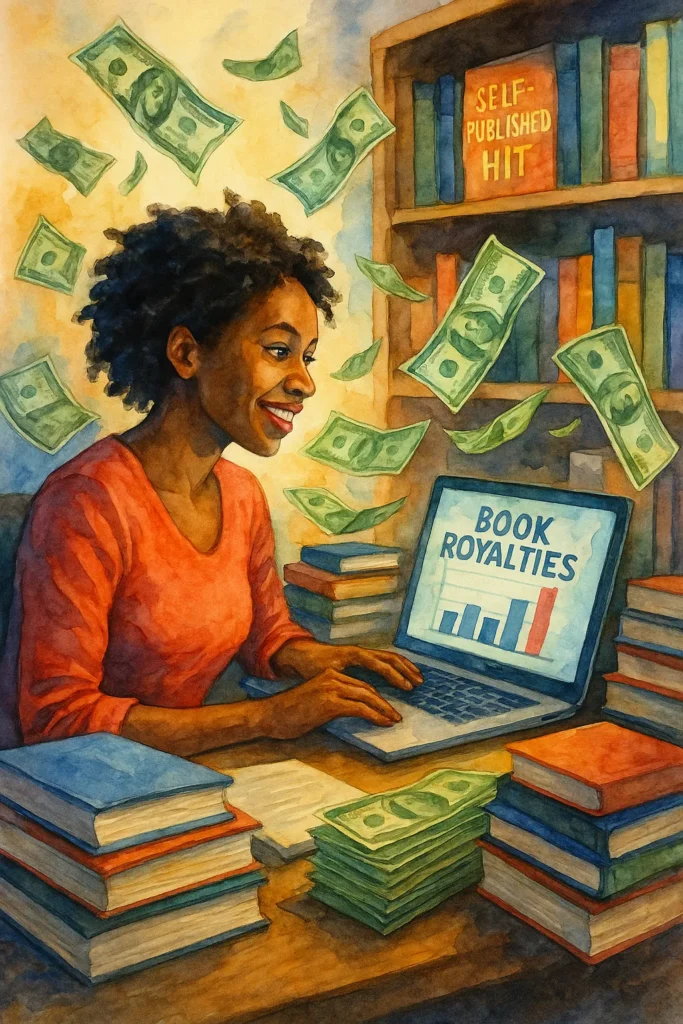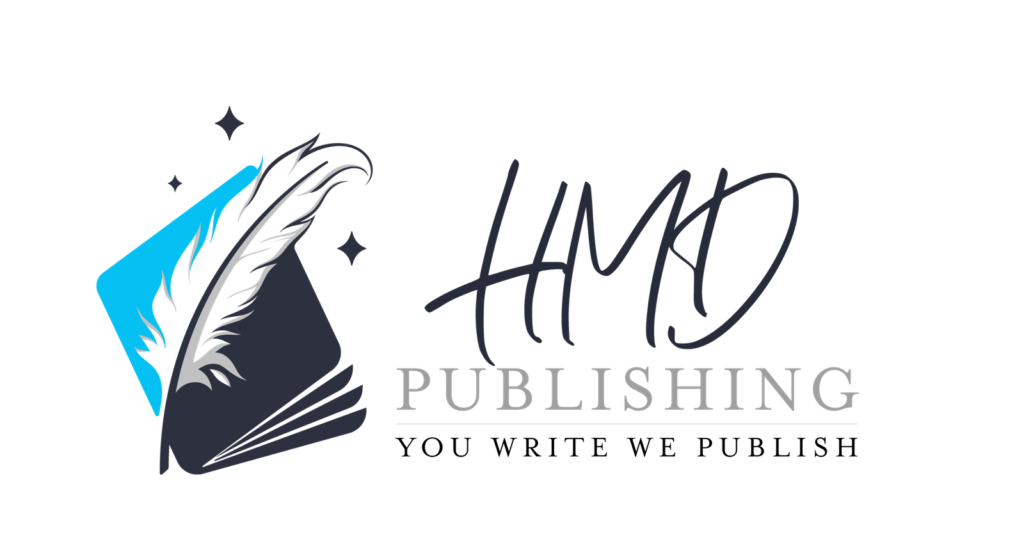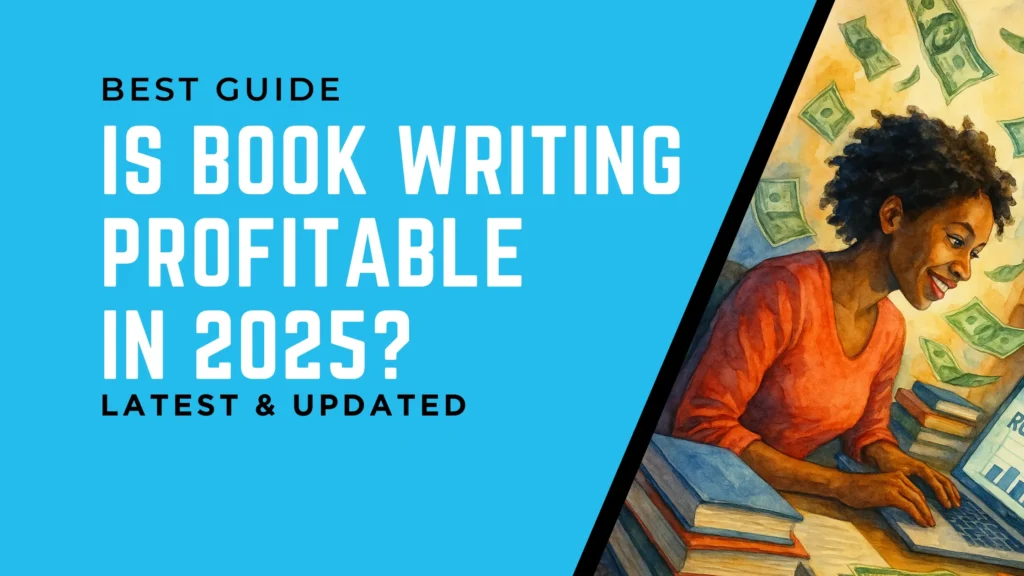Some authors quietly earn six figures from a single book, while others earn nothing. Why? Because the reality is not that simple. It is a complex world woven into many layers. While bestselling authors like Colleen Hoover earn an estimated $17,000 per month from their books, some self-published authors have achieved millionaire status as well by writing their books. However, most writers would face significantly more modest earnings, especially with their first book. Let’s unfold the several aspects of this mystery together!

How Authors Make Money from Books?
Understanding the multiple revenue-generating streams available to authors is crucial for building a sustainable income from your writing career. These are discussed below:
Book Sales
First, traditionally published authors earn money through advances and royalties. The average advance for a debut author is $57,000 across all genres and publisher types, with a median of $25,000. This means half of all first-time authors receive less than $25,000 upfront. These advances can vary significantly by genre:
- Adult Fiction: $65,908
- Memoir: $90,686
- Young Adult: $50,718
- Middle Grade: $35,406
However, advances must be “earned out” through royalties before authors see additional income. Traditional publishing royalties typically range from 10% to 15% of the retail price for hardcover books and slightly lower for paperbacks. For example, if your book sells for $20 with a 10% royalty rate, you earn $2 per book sold in the market.
On the other hand, self-published authors prefer to keep significantly higher royalties but receive no upfront advance. For example, on platforms like Amazon Kindle Direct Publishing, authors can earn 35% to 70% of each sale, depending on pricing. For a $10 book with a 70% royalty rate, the author earns $7 per sale, which is significantly more per unit than traditional publishing.
Royalties
The main difference between traditional and self-publishing lies in the royalty structure. Traditional publishers pay lower percentages because they cover editing, design, marketing, and distribution costs. Self-published authors retain 100% of profits but must handle these expenses on their own.
According to industry data, self-published books can generate double the profit of traditionally published books in a period of 10 years or a decade. This is particularly significant because many traditionally published books don’t earn their advances. On average, approximately 70% of books fail to recoup their initial investment.
Speaking Gigs & Consulting
The speaking engagements represent a profitable and money-making income stream for authors. On average, professional speakers can earn between $50,000 and $300,000 annually, with brand-new speakers earning $500-$5,000 per talk and established experts commanding $20,000-$50,000 per engagement. Authors with published books have significant credibility advantages, as books establish authority and expertise in their field.
Moreover, additional consulting and coaching opportunities emerge from book expertise. Writing coaches, for example, charge between $50-$300 per hour, with package deals ranging from $399-$6,500 depending on services offered. Authors can leverage their published work to justify premium consulting rates and attract clients seeking specific knowledge from them.
Difference in earnings: Traditional vs Self-Publishing
The Authors Guild’s 2023 survey revealed that authors reported a median book income of $31,725, with combined median income reaching $37,000 when including other author-related activities. However, the average author salary as of 2024 is $84,670.However, this does not include part-time writers or individuals who have multiple sources of income.
Traditional publishing concentrates wealth among established authors. Big-5 publishers rely on their most established authors for 63% of their e-book revenue, while very few debut authors earn enough to make a living from their advances. The reality is sharp: 19% of books published by Big Five houses sell only a dozen copies or fewer.
On the other hand, self-published authors are increasingly exceeding earnings over their traditionally published counterparts. In absolute terms, today’s self-published authors earn a higher living wage than their Big-5 counterparts. When comparing debut authors with equal time in the market, self-published authors show even greater earnings advantages.
The key advantage lies in the revenue split. While traditional publishers take the majority of revenue to cover their costs, self-published authors using print-on-demand services can achieve 40-50% profit margins on merchandise and maintain complete control over pricing and distribution.
Case Studies: How Much First-Time Authors Made
Traditional Publishing Success Stories
First-time authors in traditional publishing typically receive advances between $5,000-$15,000, though some secure significantly higher deals. One literary agent reported helping first-time authors secure book advances between $75,000-$100,000, including a cookbook that sold at auction for six figures. However, these represent exceptional cases rather than typical or general outcomes.
Self-Publishing Success Stories
Self-publishing has produced numerous millionaire authors. E.L. James initially self-published “Fifty Shades of Grey” before traditional publishers picked it up, eventually selling over 150 million copies worldwide. Andy Weir self-published “The Martian” as a serial on his blog before it became a bestseller and major film.
Lindsay Buroker exemplifies realistic self-publishing success. She published four books in her first year and transitioned from her day job to full-time writing, making four figures monthly in royalties. Her success came from consistent publishing rather than a single breakout hit.

Common Money Traps to Avoid
Publishing Scams
Authors frequently encounter fraud or scams that promise guaranteed bestseller status, fake reviews, or guaranteed media placements. Paid consumer reviews are unethical and often flagged as spam by various platforms. Services that promise guaranteed sales and top-tier media placements without legitimate industry connections are mostly scams.
Vanity publishing masquerades as legitimate publishing but charges authors $4,000-$8,000 for poor-quality services while offering unclear contracts and minimal marketing support in the future.
Financial Planning Mistakes
Many authors make the error of expecting immediate substantial income from their first book. While the reality is that building a sustainable author income takes time and multiple books over time. Authors should avoid:
- Overspending on marketing services without clear ROI metrics
- Expecting to quit my day job after publishing one book
- Investing more money than they can afford to lose in publishing services
- Failing to diversify income streams beyond book sales
Marketing Misconceptions
Many authors, most of the time, fall for services claiming “secret insider knowledge” about book marketing or exclusive contacts for guaranteed exposure. While legitimate book marketing requires consistent effort, professional relationships, and realistic expectations about timeline and results.
Hire the Best Book Cover Designers
Building Long-Term Income from a Single Book
Evergreen Content Strategy
The most successful authors create evergreen content that remains relevant over time, generating consistent sales years after publication. Publishers increasingly monetise evergreen content through bookazines, special editions, and repurposed materials, with some markets seeing 57% year-over-year consistent growth.
Series Development
Authors who prefer to write series significantly improve their earning potential. Series creates reader funnels that pull audiences through multiple purchases, increasing the potential profit from each initial sale every time. Self-published authors often prioritise rapid series publication instead of perfecting individual standalone books.
Multiple Revenue Streams
Authors can build long-term income through:
- Authors can create online courses and educational content that leverages their book expertise.
- Merchandise sales with 40-50% profit margins on print-on-demand items.
- Licensing deals for international rights, film adaptations, or educational use.
- Speaking engagements utilize the authority of the book.
- The book’s subject area can also benefit from coaching and consulting services.
Content Repurposing
A single book can generate multiple income streams through strategic repurposing. For example, authors can create workbooks, online courses, webinars, and niche follow-up books from their original content. The key lies in building systems that generate ongoing passive income rather than relying solely on active book sales.
The most successful authors treat their first book as the foundation for a broader business rather than a standalone product in the market. By diversifying income streams and consistently producing valuable content, authors can build sustainable careers that extend far beyond individual book sales.
Realistic Timeline Expectations
Building a significant income from writing typically requires multiple books and several years of consistent, ongoing efforts. While overnight successes make headlines, sustainable author careers are built through persistent ongoing publishing, audience development, and strategic business planning. New authors should plan for a 2-3 year timeline to establish meaningful income streams while maintaining other income sources during this transition period.




